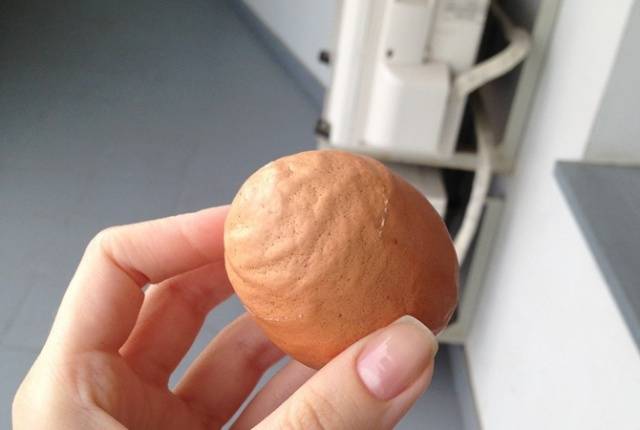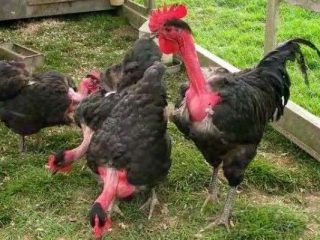Content
Buying at chicken farming egg breeds, owners want to get the most out of them. Any owner of farm animals knows that the full benefit from them can only be achieved with proper feeding. You cannot feed a cow only straw and expect to get 50 liters of milk with 7 percent fat content from it.
Same with chickens. In order for chickens to lay large eggs with strong shells, they must receive all the vitamins, minerals and trace elements they need. This does not include what is indicated on all food packaging: proteins, fats and carbohydrates.
But organizing proper feeding of laying hens at home is very difficult even for an experienced poultry farmer, not to mention beginners.
All tables indicating feeding rates and the number of required elements contain very average values. For example, all tables indicate that laying hens need 0.5 g of table salt per day. But what region does this chicken live in, and most importantly, what region does it eat grain from?
In the Altai Territory, feed grown in saline areas is highly valued by local farmers, since as a result of eating this feed, animals do not need to add feed salt.
Mountainous areas are poor in iodine and a “mountain” laying hen should receive more iodine than a chicken living by the sea.
This way you can view almost any element. In one area there will be an excess of it, in another there will be a shortage.
In order to correctly create a laying hen diet, you will have to have each new batch of feed analyzed and at the same time chicken blood for biochemistry. Considering that laying hens are usually fed several types of grains and protein products, chemical analysis of each batch of feed is a below-average pleasure.
There are two ways to solve this problem: feeding chickens with special feed for laying hens and not bothering yourself by reading feeding standards in reference books and textbooks. With the exception of very critical shortages/excesses of any elements, a living organism is capable of independently regulating the absorption of the substances it needs.
Features of feeding laying hens
At home, feeding laying hens according to the standards presented in zootechnics textbooks is almost impossible to organize.
In addition to the well-known proteins, fats, carbohydrates, calcium, phosphorus and the most well-known vitamins, laying hens need much less well-known substances, the presence of which the owners of domestic laying hens do not focus on.
Usually there is enough phosphorus in grain feeds, so you don’t have to think about it and just add feed chalk or limestone.
When feeding laying hens at home, nutrient standards can be estimated based on the condition of the eggs and their number. The most difficult thing here is that a deficiency or excess of any element causes a chain reaction in the absorption of other nutrients, and it is often very difficult to understand what exactly needs to be added or reduced.
Calcium
The calcium content in a chicken egg is on average 2 g. With high egg production, the lack of calcium greatly affects the condition of the laying hens themselves and the quality of the eggs. Not only does egg production and shell quality decrease, but the plasticity of the laying hen’s bones also increases. Such bones are called “gutta-percha”. The amount of calcium that a laying hen can “give” to eggs from her own bones is only enough for 3-4 eggs. Next, the hen will produce an egg without a shell.
Phosphorus
Calcium without phosphorus cannot be absorbed. But fortunately, there is a lot of this element in grain feed and a lot in flour milling waste - bran. If laying hens are prepared with moist bran mash, there is no need to worry about phosphorus deficiency.
Vitamin D₃
There is always limestone in the feeder, bran is given out regularly, but the shells of the eggs are still weak and soft. Have you checked the food for vitamin D₃ content? With its deficiency, calcium is poorly absorbed, so the constant presence of limestone in the feeders is not enough; you also need cholecalciferol in the feed or a long walk outside.
Sodium
Vitamin D₃ has already been added in the required quantities, having carried out a chemical analysis of the feed, and the eggs still have a bad shell. Because it's not that simple.
Calcium will be poorly absorbed even if there is a lack of sodium.Sodium is part of ordinary table salt, another name for which is sodium chloride. Laying hens should receive 0.5 - 1 g of salt per day.
Added salt and it got worse? Perhaps the fact is that before this there was an excess of sodium. Chickens that eat the remains of prepared food from the human table often suffer from an excess of salts in the body. Due to an excess of salts, calcium absorption also slows down.
Manganese
The shell becomes thinner and egg production decreases also due to a lack of manganese. In addition to thinning of the shell, “mottling” is also observed with a lack of manganese. Not spots of more intense color, but areas of a thinner shell, noticeable when looking at the egg in the light. Manganese requires 50 mg per day.
In addition to the above microelements and minerals, laying hens also need:
- zinc 50 mg;
- iron 10 mg;
- copper 2.5 mg;
- cobalt 1 mg;
- iodine 0.7 mg.
Daily doses are indicated.
The metabolism of chickens is affected not only by microelements, but also by amino acids. Without amino acids, it is impossible to absorb microelements and minerals. The necessary synthesis of proteins for an egg without amino acids is also impossible.
The table below shows the daily amino acid requirements for laying hens.
Daily feeding rates for laying hens:
| Amino acid | Required quantity, g |
|---|---|
| Methionine | 0,37 |
| Lysine | 0,86 |
| Cystine | 0,32 |
| Tryptophan | 0,19 |
| Arginine | 1,03 |
| Histidine | 0,39 |
| Leucine | 1,49 |
| Isoleucine | 0,76 |
| Phenylalanine | 0,62 |
| Threonine | 0,52 |
| Valin | 0,73 |
| Glycine | 0,91 |
During the laying period, laying hens have a greater need for vitamins. But again you need to be careful not to overdose on vitamin supplements. Hypervitaminosis is worse than hypovitaminosis.
In addition to the most well-known vitamins A, D, E, and group B, which are usually indicated in the list of chemical composition, chickens also need a couple of rather exotic vitamins K and H.
Excess calcium
The lack of calcium was eliminated, and another problem appeared: a thick, rough shell.
Such a shell can form when there is an excess of calcium or a lack of water.
If there is a lack of water, the egg lingers in the laying hen’s oviduct, becoming overgrown with extra layers of shell. To eliminate this problem, it is enough to provide the laying hen with constant access to water, even in winter. You can install heated drinking bowls if you can find them.
The second reason for egg retention in the oviduct is short daylight hours in winter. In this case, egg production decreases, and calcium continues to be supplied with feed. It is necessary to increase daylight hours through artificial lighting and replace part of the calcium-rich feed with whole grains.
Features of the diet of egg-laying hens
The basis of the diet of laying hens is cereal grains: barley, millet, corn, sorghum, oats and others. Legumes: soybeans, peas and others provide about 10%, although it is this grain that contains the maximum amount of protein required by laying hens and some essential amino acids, for example, lysine. But an overdose of protein is also not necessary.
But you can’t live without fiber completely. It stimulates intestinal function.
Dry food type
When preparing feed for chickens on their own, adhere to the following proportions (in%):
- grain 60-75;
- wheat bran up to 7;
- meal/cake from 8 to 15;
- fish/meat and bone/bone flour 4-6;
- yeast 3-6;
- feed fat 3-4;
- herbal flour 3-5;
- mineral and vitamin premixes 7-9.
With the dry type of feeding, it is better if laying hens receive complete feed that already contains all the nutrients they need. Compound feed for one chicken will go up to 120 g per day.
Combined type of feeding of laying hens
With a combined type of feeding, the diet for laying hens will consist of 80% grain and additives and 20% succulent feed.
With a combined type of feeding, chickens can be given animal protein contained in milk and meat. In addition to flour made from fish, bones, and blood, chickens are given whey and skim milk. Some owners even give away cottage cheese.
A good option is dry bread soaked in dairy products.
Feed laying hens on a schedule or with constant access to feed?
Chickens have a habit of digging up food with their feet, scattering it in all directions, so many owners prefer to feed chickens at a certain time. In this case, the chickens are given such a portion that they eat it right away. At the same time, at poultry farms, laying hens have constant access to feed, which is more economical, given the need for high intensity of egg laying in laying hens at poultry farms.
When feeding according to a schedule, laying hens must be fed at least 3 times a day in winter, and 4-5 times a day in summer, at intervals of 3-4 hours. It’s like you can’t leave home, just feed the chickens.
There is also a way out for home conditions. You can make bunker feeders for chickens from sewer pipes.It is inexpensive, but laying hens will have constant access to feed, and they will not be able to dig for it.
There can be many options for such feeders. The video shows another example of a chicken feeder. And not only feeders, but also pipe drinking bowls.















